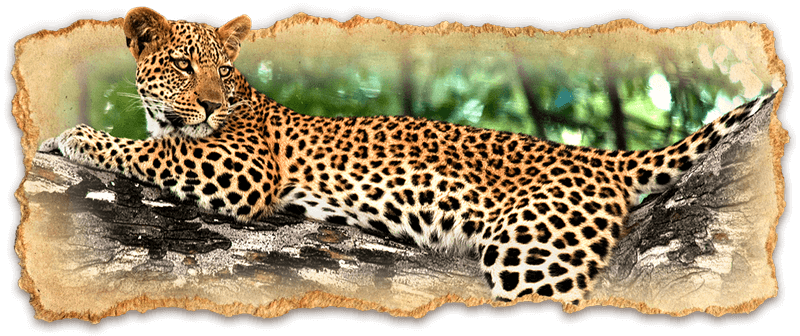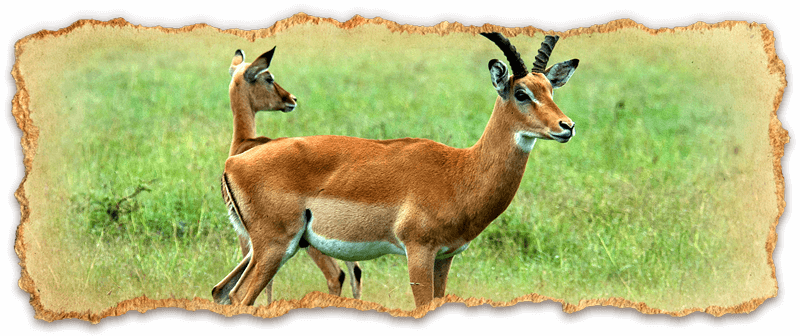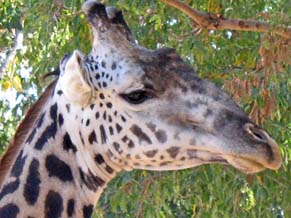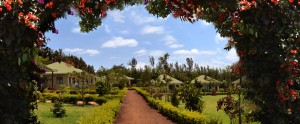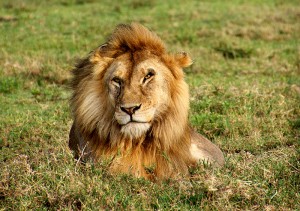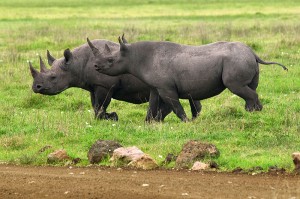Serengeti Wildlife Escape
~ Deluxe ~
~ Deluxe ~
The best season for this departure is December—March
Safari Overview
Our Serengeti Wildlife Safari presents the opportunity to observe the best possible concentration of carnivore along northern Tanzania’s riverbeds and swamps while enjoying deluxe accommodations throughout the most popular national parks and destinations.
12 days
11 nights
- Safari Highlights:
- See masses of pink flamingos in Arusha National Park.
- Behold the highest concentration of elephants in Northern Tanzania at Tarangire National Park.
- Observe a ground water forest which is home to enormous troops of baboons and tree-climbing lions in Lake Manyara National Park.
- Conceive one of the highest concentrations of wildlife including the rare black rhino in Ngorongoro Crater.
- Witness the “Cradle of Mankind,” Olduvai Gorge.
- Discover local culture including Maasai Village, the “Hunter Gatherers” Hadzabe people, the Datoga people, and a local farmers market.
- Enjoy 3-overnights and 2.5-days of game drive in the vast Serengeti Plains.
- Capture the best concentration of lions in Central Serengeti.
Itinerary
Deluxe Serengeti Wildlife Safari: Discover Northern Tanzania
Day 1
Arrive in Arusha, Tanzania
You will arrive at Kilimanjaro International Airport (JRO) by your international flight. Your driver guide will meet you at you at the airport and drive you to Kibo Palace Hotel (or similar) for overnight (Bed & Breakfast).
About Kibo Palace Hotel
Day 2
Game Drive Day
Enjoy a full-day game drive at Arusha National Park with picnic lunch. Dinner and overnight will be at Kibo Palace Hotel (or similar).
About Arusha National Park
Day 3
Tarangire National Park
Drive to Maramboi Tented Camp for lunch. Set out for an afternoon game drive in Tarangire National Park. Overnight will be at Maramboi Tented Camp (or similar).
About Tarangire National Park
About Maramboi Tented Camp
Day 4
Wildlife Sightings at Tarangire National Park
Press on with morning and afternoon game drives in Tarangire National Park. Dinner and overnight will be at Maramboi Tented Camp (or similar).
Day 5
Lake Manyara National Park
Onward to Lake Manyara National Park for a game drive and picnic lunch. Dinner and overnight will be at Country Lodge (or similar).
About Lake Manyara National Park
About Country Lodge
Day 6
Discover Local Culture
Early in the morning, drive to Lake Eyasi to walk with the “Hunter Gatherers” Hadzabe people as they embark on their morning hunting routine. Also enjoy a visit with the Datoga people and learn about their blacksmith skills. At noon, return to your lodge for lunch. At 4:00 PM, visit a local farmers market. Dinner and overnight will be at Country Lodge (or similar).
About About Local Culture
Day 7
Serengeti National Park
Drive to Serengeti Kati Kati Tented Camp for lunch. In the afternoon, get ready for game drives in Serengeti National Park. Dinner and overnight will be at Serengeti Kati Kati Tented Camp (or similar).
About Serengeti National Park
About Serengeti Kati Kati Tented Camp
Day 8
Game Drives in the Serengeti
Enjoy a morning and afternoon game drive in Serengeti National Park with hot lunch served at your camp (or full-day game drives with picnic lunch). Dinner and overnight will be at Serengeti Kati Kati Tented Camp (or similar).
Day 9
Serengeti Wildlife Sightings Continue
Enjoy another morning and afternoon game drive in Serengeti National Park with hot lunch served at your camp (or full-day game drives with picnic lunch). Dinner and overnight will be at Serengeti Kati Kati Tented Camp (or similar).
Day 10
Olduvai Gorge Museum and Maasai Village
After breakfast, drive to Olduvai Gorge with picnic lunch for a visit. In the PM, visit Maasai Village. Dinner and overnight will be at Ngorongoro Farm House Valley (or similar).
About Olduvai Gorge Museum
About Maasai Village
About Ngorongoro Farm House Valley
Day 11
Ngorongoro Crater
Remarkable sightings will be yours on this full-day Crater tour with picnic lunch. Dinner and overnight will be at Ngorongoro Farm House Valley (or similar).
About Ngorongoro Crater
Day 12
Return to Arusha
Drive to Arusha for lunch and a dayroom at Kibo Palace Hotel. In the evening, you’ll be transferred to Kilimanjaro International Airport (JRO) for your international flight back home.
- Inclusions:
- Respective accommodations or similar throughout as indicated.
- All meals on main tour as shown (except Day 1 at Bed & Breakfast).
- All game drives with photographic roof hatch land cruiser operated by a professional driver guide.
- All transfers as per the itinerary.
- Complimentary bottled water during game drives.
- Tips to waiters.
- All national park entry fees and Olduvai Gorge Museum entry fee.
- Visit to Maasai Village.
- Exclusions:
- Entry VISA and local airport tax.
- Personal and baggage insurance.
- Excess baggage charges levied by airline.
- Meals and beverages other than specified.
- Tips to your driver guide.
- Tips to porters.
- Cost for anything not mentioned on the list above.
Accommodations
Our Deluxe Serengeti Wildlife SafariFeatures Deluxe Accommodations
Kibo Palace Hotel - Arusha
Named after the highest peak of Africa’s highest mountain – Mt Kilimanjaro, Kibo Palace Hotel is one of Arusha’s most exciting and innovative luxury hotels; contemporary, conductive and unconventional, a luxury hotel with a new attitude. Located in the heart of Arusha, gateway to the world’s most renowned game parks, it is a 45-minute drive from Kilimanjaro International Airport (JRO) and a 15-minute walk from Arusha city center and the Arusha International Conference Center. [learn more]
Maramboi Tented Camp - Tarangire National Park
An impressive landscape from the Rift Valley gives the visitor an amazing natural welcome to an area extraordinarily rich in wildlife. Maramboi Tented Camp offers stunning views of the Manyara National Park, Rift Valley, Ngorongoro highlands and on clear days even Oldonyo Lengai a sacred mountain to the Maasai. The camp offers 40 spacious tents built on ample wooden decks. Among them there are 26 standard rooms, 10 suites and 2 units with 2 rooms interconnected; ideal for families with children. They all have en suite facilities and private verandas with 24 hours 220V electric lighting. [learn more]
Country Lodge - Karatu (and Near Ngorongoro Area)
Country Lodge Karatu symbolizes simple country comforts, providing pleasant and affordable lodging in the heart of Tanzania’s rich and scenic highlands. Our lodge sits within five acres nestled on the edge of Karatu town, surrounded by rolling plains reaching up to the coffee hills of Oldeani and the forests’ of Ngorongoro. Garden paths led to eleven double cottages surrounded by green lawns, hedged by brightly flowered bougainvillaea, tropical plants and trees. Come and enjoy the tranquillity, home comforts and warm Tanzanian hospitality that Country Lodge offers. [learn more]
Serengeti Kati Kati Tented Camp - Serengeti National Park
Serengeti Kati Kati Tented Camp is a mobile tented camp in Central Serengeti, strategically located to cover the vast Serengeti Plains. The camp offers comfortable accommodation and a unique opportunity to enjoy a real safari camp experience. The camp is only a two hour scenic drive from Olduvai Gorge Museum and Grumeti River. A cozy mess tent is located in the center of the camp where meals are served. The campfire is ready every evening for appetizers and snacks before dinner. Throughout the camp there are 10 tents with en suite facilities. [learn more]
Ngorongoro Farm House - Karatu (and Near Ngorongoro Area)
Ngorongoro Farm House is a small, exclusive lodge facing the Oldeani Volcano. It nestles in a 500 acre coffee farm, located just 4 km from the Lolduare entrance to the Ngorongoro Conservation Area. Featuring 52 Large Double-chalet Rooms. Of the Standard Rooms there are 25 twins, 17 doubles (king bed), 7 triples, 6 interconected rooms, en-suite bathrooms with built in showers, and mosquito nets. Of the Suite Rooms there are 3 doubles (king bed). All Rooms have large beds, a private verandah, walkways, and telephones. [learn more]
Named after the highest peak of Africa’s highest mountain – Mt Kilimanjaro, Kibo Palace Hotel is one of Arusha’s most exciting and innovative luxury hotels; contemporary, conductive and unconventional, a luxury hotel with a new attitude. Located in the heart of Arusha, gateway to the world’s most renowned game parks, it is a 45-minute drive from Kilimanjaro International Airport (JRO) and a 15-minute walk from Arusha city center and the Arusha International Conference Center. [learn more]
Maramboi Tented Camp - Tarangire National Park
An impressive landscape from the Rift Valley gives the visitor an amazing natural welcome to an area extraordinarily rich in wildlife. Maramboi Tented Camp offers stunning views of the Manyara National Park, Rift Valley, Ngorongoro highlands and on clear days even Oldonyo Lengai a sacred mountain to the Maasai. The camp offers 40 spacious tents built on ample wooden decks. Among them there are 26 standard rooms, 10 suites and 2 units with 2 rooms interconnected; ideal for families with children. They all have en suite facilities and private verandas with 24 hours 220V electric lighting. [learn more]
Country Lodge - Karatu (and Near Ngorongoro Area)
Country Lodge Karatu symbolizes simple country comforts, providing pleasant and affordable lodging in the heart of Tanzania’s rich and scenic highlands. Our lodge sits within five acres nestled on the edge of Karatu town, surrounded by rolling plains reaching up to the coffee hills of Oldeani and the forests’ of Ngorongoro. Garden paths led to eleven double cottages surrounded by green lawns, hedged by brightly flowered bougainvillaea, tropical plants and trees. Come and enjoy the tranquillity, home comforts and warm Tanzanian hospitality that Country Lodge offers. [learn more]
Serengeti Kati Kati Tented Camp - Serengeti National Park
Serengeti Kati Kati Tented Camp is a mobile tented camp in Central Serengeti, strategically located to cover the vast Serengeti Plains. The camp offers comfortable accommodation and a unique opportunity to enjoy a real safari camp experience. The camp is only a two hour scenic drive from Olduvai Gorge Museum and Grumeti River. A cozy mess tent is located in the center of the camp where meals are served. The campfire is ready every evening for appetizers and snacks before dinner. Throughout the camp there are 10 tents with en suite facilities. [learn more]
Ngorongoro Farm House - Karatu (and Near Ngorongoro Area)
Ngorongoro Farm House is a small, exclusive lodge facing the Oldeani Volcano. It nestles in a 500 acre coffee farm, located just 4 km from the Lolduare entrance to the Ngorongoro Conservation Area. Featuring 52 Large Double-chalet Rooms. Of the Standard Rooms there are 25 twins, 17 doubles (king bed), 7 triples, 6 interconected rooms, en-suite bathrooms with built in showers, and mosquito nets. Of the Suite Rooms there are 3 doubles (king bed). All Rooms have large beds, a private verandah, walkways, and telephones. [learn more]
Destinations
Discover the World's Abundant Wildlife in Northern Tanzania
Arusha National Park
The entrance gate leads into shadowy montane forest inhabited by inquisitive Blue monkeys and colourful turacos and trogons – the only place on the northern safari circuit where the Black-and-White Colobus Monkey is easily seen. Further north, rolling grassy hills enclose the tranquil beauty of the Momela Lakes, each one a different hue of green or blue. Their shallows sometimes tinged pink with thousands of flamingos, the lakes support a rich selection of resident and migrant water-fowl, and shaggy waterbucks display their large lyre-shaped horns on the watery fringes. Giraffes glide across the grassy hills, between grazing zebra herds, while pairs of wide-eyed dik-dik dart into scrubby bush like overgrown hares on spindly legs.
It is also at dusk and dawn that the veil of cloud on the eastern horizon is most likely to clear, revealing the majestic snow-capped peaks of Kilimanjaro, 50km (30 miles) distant.
But it is Kilimanjaro’s unassuming cousin, Mount Meru–the fifth highest in Africa at 4566 metres above sea level (14990 feet) – that dominates the park’s horizon. Its peaks and eastern footslopes protected within the national park, Meru offers unparalleled views of its famous neighbor, while also forming a rewarding hiking destination in its own right.
Herds of up to 300 elephants scratch the dry river bed for underground streams, while migratory wildebeest, zebra, buffalo, impala, gazelle, hartebeest and eland crowd the shrinking lagoons. It’s the greatest concentration of wildlife outside the Serengeti ecosystem – a buffet for predators. The swamps, tinged green year round, are the focus for 550 bird varieties, the most breeding species in one habitat anywhere in the world.
The compact game –viewing circuit through Manyara offers a virtual microcosm of the Tanzanian safari experience. From the entrance gate, the road winds through an expanse of lush jungle like groundwater forest where hundred-strong baboon troops lounge nonchalantly along the roadside, Blue monkeys scamper nimbly between the ancient Mahogany trees, dainty Bushbuck tread warily through the shadows, and outsized forest hornbills honk in the high canopy.
Contrasting with the intimacy of the forest is the grassy floodplain and its expansive views eastward across the Alkakine Lake. Large buffalo, wildebeest and zebra herds congregate on these grassy plains, as do giraffes some so dark in coloration that they appear to be black from a distance.
Manyara provides the perfect introduction to Tanzania’s birdlife. More than 400 species have been recorded, and even a first-time visitor to Africa might reasonably expect to observe 100 of these in one day. Highlights include thousands of pink-hued flamingos on their perpetual migration, as well as other large waterbirds such as pelicans, cormorants and storks.
The Hadzabe people or Tindiga is the only Hunter Gatherers tribe that live in Lake Eyasi Basin adjacent Ngorongoro Conservation Area in Northern Tanzania. They are believed to be the descendant of the South Africa click speakers Bush Men. They neither grow crops nor raise livestock. Their living depends on hunting, collecting fruits and digging for roots. Their life style has not changed over the last several hundred years. [learn more]
The Datoga People
Datoga tribe are originally from Southern Sudan and Western Ethiopia. They are believed to have moved in Central Tanzania Area probably about 3000 years ago. They also live in the Arid Area near Mt.Hanang in North Central Tanzania. In Lake Eyasi basin they moved in about 150 years ago to look for better grazing land. They are semi-nomadic people mostly depending on livestock keeping, small scale farming as well as using their blacksmith skills to make a living. Maasai people call them Mang’ati which means respected Enemy. [learn more]
Farmers Market
This is a stop where our guests can visit a local Farmers Market to see different local produce that are being sold.
Serengeti National Park
Tanzania’s oldest and most popular national park, also a World Heritage Site and also proclaimed a Worldwide Wonder, the Serengeti is famed for its annual migration, when some two million hooves pound the open plains, as more than 200,000 zebra and 300,000 Thomson’s gazelle join the wildebeest’s trek for fresh grazing. Yet even when the migration is quiet, the Serengeti offers arguably the most scintillating game-viewing in Africa: great herds of buffalo, smaller groups of elephant and giraffes, and hundreds upon hundreds of eland, topi, kongoni, impala and Grant's gazelle.
The spectacle of predators versus prey dominates Tanzania's greatest park. Golden–mained lion prides feast on the abundance of plain grazers. Solitary leopards haunt the Acacia trees lining the Seronera River, while high densities of cheetahs prowling the southeastern plains. Almost uniquely, all three African jackal species occur here, alongside the Spotted hyena and a host of more elusive small predators, ranging from the insectivorous aardwolf to the beautiful serval cat.
But there is more to Serengeti than large mammals. 500–plus bird species, ranging from the outsized ostrich and bizarre secretary bird of the open grass-land, to the Black eagles that soar effortlessly above the Lobo Hills.
Laetoli is found west of Ngorongoro Crater. It is here where hominid footprints are preserved in volcanic rock 3.6 million years old and represent some of the earliest signs of mankind in the world. Excavation, mainly by the archaeologists Louis and Mary Leakey, yielded four different kinds of hominid, showing a gradual increase in brain size and in the complexity of their stone tools. The first skull of Zinjanthropus, commonly known as the "Nutcracker Man”, who lived about 1.75 million years ago was found here. [learn more]
Maasai Village
The traditional Maasai Village is called a Manyata. This is where different Maasai families live with their livestock. The Livestock live in the middle of thick Acacia thorny fences that protect them from any possible predator attacks. The visit to these villages give guests an opportunity to learn the lifestyle of Maasai people including their culture and tradition. [learn more]
Ngorongoro Crater
The Ngorongoro Crater is only 3% of the total area of Ngorongoro Conservation Area (NCA), but it is home to more than 75% of all the game animals found in NCA. Technically known as a caldera, Ngorongoro crater is the largest unflooded and unbroken caldera in the world with 19.2 km in diameter, 2000 feet deep, and 102 sq miles in area. The rich pasture and permanent water of the crater floor supports a large resident population of wildlife of up to 25,000 predominantly grazing animals. These include wildebeest, zebra, buffalo, kongoni, gazelle, warthog and eland. The swamps and forest provide additional resources for hippo, elephant, waterbuck, reedbuck, and bushbuck, baboons and Vervet monkeys. The steep inner slopes provide habitat for dik-dik and the rare Mountain reedbuck.
Jackals thrive in the crater and bat-eared foxes live in the short grass area. Predatory animals such as lion, leopard, cheetah and serval cats live off the abundant wildlife; and large packs of hyenas roam the crater, making their own kills and scavenging from others. The crater is a dynamic and constantly changing ecosystem and the numbers and proportion of some animals including lions and Black rhinos have fluctuated considerably over the past 30 years. Thanks to anti-poaching patrols in the crater and the whole ecosystem, the Black rhino population is coming back. Ngorongoro crater is one of the few places in East Africa where visitors can see a rhino. [learn more]
The entrance gate leads into shadowy montane forest inhabited by inquisitive Blue monkeys and colourful turacos and trogons – the only place on the northern safari circuit where the Black-and-White Colobus Monkey is easily seen. Further north, rolling grassy hills enclose the tranquil beauty of the Momela Lakes, each one a different hue of green or blue. Their shallows sometimes tinged pink with thousands of flamingos, the lakes support a rich selection of resident and migrant water-fowl, and shaggy waterbucks display their large lyre-shaped horns on the watery fringes. Giraffes glide across the grassy hills, between grazing zebra herds, while pairs of wide-eyed dik-dik dart into scrubby bush like overgrown hares on spindly legs.
It is also at dusk and dawn that the veil of cloud on the eastern horizon is most likely to clear, revealing the majestic snow-capped peaks of Kilimanjaro, 50km (30 miles) distant.
But it is Kilimanjaro’s unassuming cousin, Mount Meru–the fifth highest in Africa at 4566 metres above sea level (14990 feet) – that dominates the park’s horizon. Its peaks and eastern footslopes protected within the national park, Meru offers unparalleled views of its famous neighbor, while also forming a rewarding hiking destination in its own right.
- Location: 335km (208 miles) from Arusha, stretching north to Kenya and bordering Lake Victoria to the west
- What to do: Hot-air balloon safaris, game viewing. Visit neighbouring Lake Victoria and Olduvai Gorge
- Best seasons to visit:
- December–June to see the wildebeest migration
- June–October to see resident animals and predators (however, mid-March/April is the peak of the rain season)
- Learn more
Herds of up to 300 elephants scratch the dry river bed for underground streams, while migratory wildebeest, zebra, buffalo, impala, gazelle, hartebeest and eland crowd the shrinking lagoons. It’s the greatest concentration of wildlife outside the Serengeti ecosystem – a buffet for predators. The swamps, tinged green year round, are the focus for 550 bird varieties, the most breeding species in one habitat anywhere in the world.
- Location: 118 km (75 miles) southewest of Arusha
- Getting there: Easy drive from Arusha or Lake Manyara following a surfaced road to within 7km (four miles) of the main entrance gate; can continue on to Ngorongoro Crater and the Serengeti
- What to do: Guided walking safaris; day trips to Maasai and Barabaig villages, as well as to the hundreds of ancient rock paintings in the vicinity of Kolo on the Dodoma Road
- Learn more
The compact game –viewing circuit through Manyara offers a virtual microcosm of the Tanzanian safari experience. From the entrance gate, the road winds through an expanse of lush jungle like groundwater forest where hundred-strong baboon troops lounge nonchalantly along the roadside, Blue monkeys scamper nimbly between the ancient Mahogany trees, dainty Bushbuck tread warily through the shadows, and outsized forest hornbills honk in the high canopy.
Contrasting with the intimacy of the forest is the grassy floodplain and its expansive views eastward across the Alkakine Lake. Large buffalo, wildebeest and zebra herds congregate on these grassy plains, as do giraffes some so dark in coloration that they appear to be black from a distance.
Manyara provides the perfect introduction to Tanzania’s birdlife. More than 400 species have been recorded, and even a first-time visitor to Africa might reasonably expect to observe 100 of these in one day. Highlights include thousands of pink-hued flamingos on their perpetual migration, as well as other large waterbirds such as pelicans, cormorants and storks.
- Location: The entrance gate lies 1.5 hours (126km/80 miles) west of Arusha along a newly surfaced road, close to the ethnically diverse market town of Mto Wa Mbu.
- What to do: Game drives and night game drives, cultural tours, mountain bike outside the park, walking safari inside the park.
- Best time: Dry season (July-October) for large mammals; wet season (November-June) for bird watching, the waterfalls and canoeing.
- Learn more
The Hadzabe people or Tindiga is the only Hunter Gatherers tribe that live in Lake Eyasi Basin adjacent Ngorongoro Conservation Area in Northern Tanzania. They are believed to be the descendant of the South Africa click speakers Bush Men. They neither grow crops nor raise livestock. Their living depends on hunting, collecting fruits and digging for roots. Their life style has not changed over the last several hundred years. [learn more]
The Datoga People
Datoga tribe are originally from Southern Sudan and Western Ethiopia. They are believed to have moved in Central Tanzania Area probably about 3000 years ago. They also live in the Arid Area near Mt.Hanang in North Central Tanzania. In Lake Eyasi basin they moved in about 150 years ago to look for better grazing land. They are semi-nomadic people mostly depending on livestock keeping, small scale farming as well as using their blacksmith skills to make a living. Maasai people call them Mang’ati which means respected Enemy. [learn more]
Farmers Market
This is a stop where our guests can visit a local Farmers Market to see different local produce that are being sold.
Serengeti National Park
Tanzania’s oldest and most popular national park, also a World Heritage Site and also proclaimed a Worldwide Wonder, the Serengeti is famed for its annual migration, when some two million hooves pound the open plains, as more than 200,000 zebra and 300,000 Thomson’s gazelle join the wildebeest’s trek for fresh grazing. Yet even when the migration is quiet, the Serengeti offers arguably the most scintillating game-viewing in Africa: great herds of buffalo, smaller groups of elephant and giraffes, and hundreds upon hundreds of eland, topi, kongoni, impala and Grant's gazelle.
The spectacle of predators versus prey dominates Tanzania's greatest park. Golden–mained lion prides feast on the abundance of plain grazers. Solitary leopards haunt the Acacia trees lining the Seronera River, while high densities of cheetahs prowling the southeastern plains. Almost uniquely, all three African jackal species occur here, alongside the Spotted hyena and a host of more elusive small predators, ranging from the insectivorous aardwolf to the beautiful serval cat.
But there is more to Serengeti than large mammals. 500–plus bird species, ranging from the outsized ostrich and bizarre secretary bird of the open grass-land, to the Black eagles that soar effortlessly above the Lobo Hills.
- Location: 335km (208 miles) from Arusha, stretching north to Kenya and bordering Lake Victoria to the west
- What to do: Hot-air balloon safaris, game viewing. Visit neighbouring Lake Victoria, Olduvai Gorge
- Best seasons to visit:
- December–June to see the wildebeest migration
- June–October to see resident animals and predators (however, mid-March/April is the peak of the rain season)
- Learn more
Laetoli is found west of Ngorongoro Crater. It is here where hominid footprints are preserved in volcanic rock 3.6 million years old and represent some of the earliest signs of mankind in the world. Excavation, mainly by the archaeologists Louis and Mary Leakey, yielded four different kinds of hominid, showing a gradual increase in brain size and in the complexity of their stone tools. The first skull of Zinjanthropus, commonly known as the "Nutcracker Man”, who lived about 1.75 million years ago was found here. [learn more]
Maasai Village
The traditional Maasai Village is called a Manyata. This is where different Maasai families live with their livestock. The Livestock live in the middle of thick Acacia thorny fences that protect them from any possible predator attacks. The visit to these villages give guests an opportunity to learn the lifestyle of Maasai people including their culture and tradition. [learn more]
Ngorongoro Crater
The Ngorongoro Crater is only 3% of the total area of Ngorongoro Conservation Area (NCA), but it is home to more than 75% of all the game animals found in NCA. Technically known as a caldera, Ngorongoro crater is the largest unflooded and unbroken caldera in the world with 19.2 km in diameter, 2000 feet deep, and 102 sq miles in area. The rich pasture and permanent water of the crater floor supports a large resident population of wildlife of up to 25,000 predominantly grazing animals. These include wildebeest, zebra, buffalo, kongoni, gazelle, warthog and eland. The swamps and forest provide additional resources for hippo, elephant, waterbuck, reedbuck, and bushbuck, baboons and Vervet monkeys. The steep inner slopes provide habitat for dik-dik and the rare Mountain reedbuck.
Jackals thrive in the crater and bat-eared foxes live in the short grass area. Predatory animals such as lion, leopard, cheetah and serval cats live off the abundant wildlife; and large packs of hyenas roam the crater, making their own kills and scavenging from others. The crater is a dynamic and constantly changing ecosystem and the numbers and proportion of some animals including lions and Black rhinos have fluctuated considerably over the past 30 years. Thanks to anti-poaching patrols in the crater and the whole ecosystem, the Black rhino population is coming back. Ngorongoro crater is one of the few places in East Africa where visitors can see a rhino. [learn more]
Yes, I'm interested!
Have questions? Ready to book? Drop us a line and we'll get right back with you!
Use this form to book the Deluxe Serengeti Wildlife Escape.
You may customize a Signature Safari Itinerary to your liking, or simply design an itinerary from scratch!


